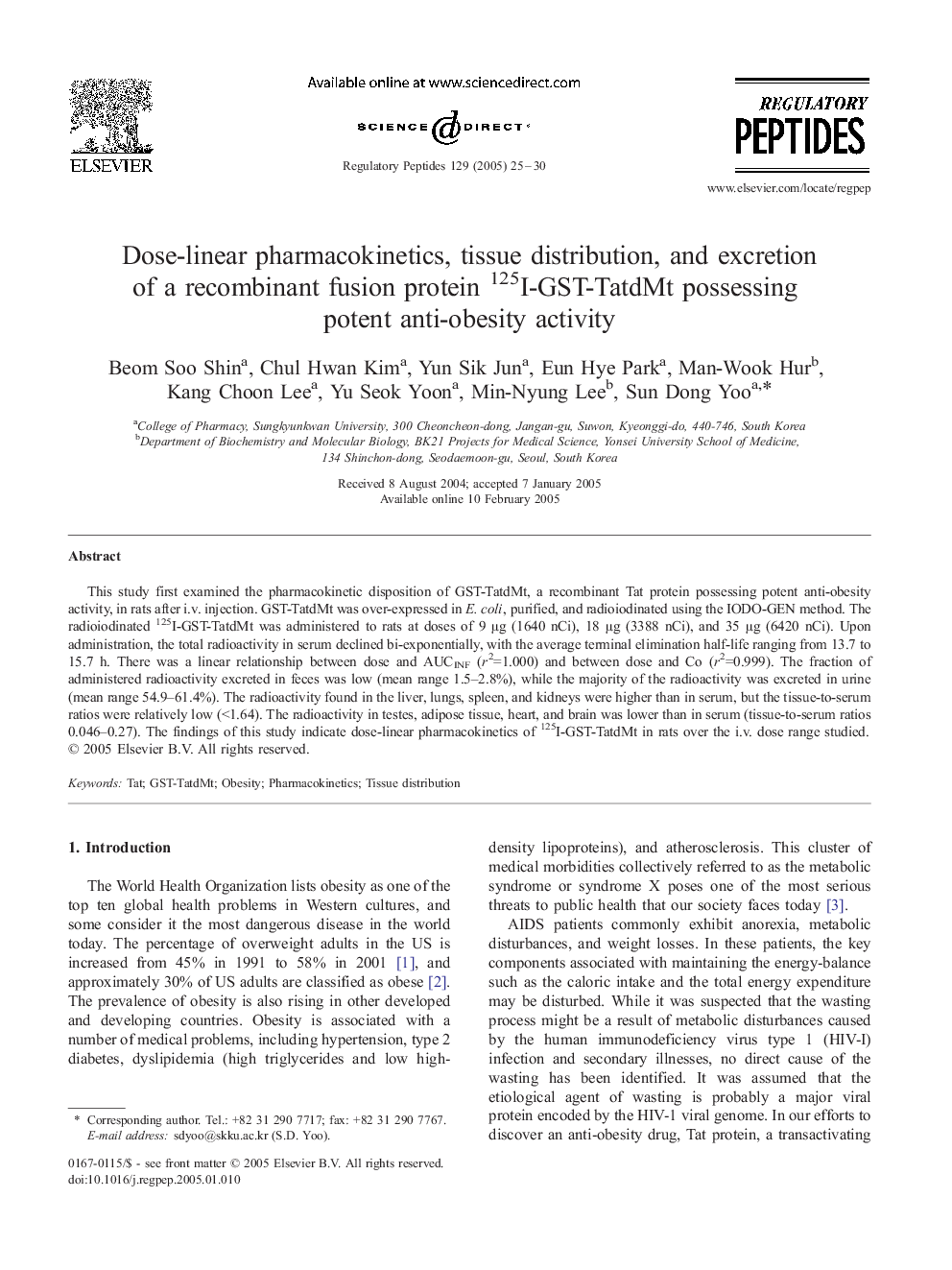| Article ID | Journal | Published Year | Pages | File Type |
|---|---|---|---|---|
| 9894402 | Regulatory Peptides | 2005 | 6 Pages |
Abstract
This study first examined the pharmacokinetic disposition of GST-TatdMt, a recombinant Tat protein possessing potent anti-obesity activity, in rats after i.v. injection. GST-TatdMt was over-expressed in E. coli, purified, and radioiodinated using the IODO-GEN method. The radioiodinated 125I-GST-TatdMt was administered to rats at doses of 9 μg (1640 nCi), 18 μg (3388 nCi), and 35 μg (6420 nCi). Upon administration, the total radioactivity in serum declined bi-exponentially, with the average terminal elimination half-life ranging from 13.7 to 15.7 h. There was a linear relationship between dose and AUCINF (r2=1.000) and between dose and Co (r2=0.999). The fraction of administered radioactivity excreted in feces was low (mean range 1.5-2.8%), while the majority of the radioactivity was excreted in urine (mean range 54.9-61.4%). The radioactivity found in the liver, lungs, spleen, and kidneys were higher than in serum, but the tissue-to-serum ratios were relatively low (<1.64). The radioactivity in testes, adipose tissue, heart, and brain was lower than in serum (tissue-to-serum ratios 0.046-0.27). The findings of this study indicate dose-linear pharmacokinetics of 125I-GST-TatdMt in rats over the i.v. dose range studied.
Related Topics
Life Sciences
Biochemistry, Genetics and Molecular Biology
Biochemistry
Authors
Beom Soo Shin, Chul Hwan Kim, Yun Sik Jun, Eun Hye Park, Man-Wook Hur, Kang Choon Lee, Yu Seok Yoon, Min-Nyung Lee, Sun Dong Yoo,
